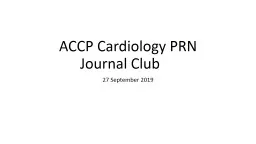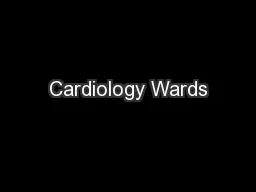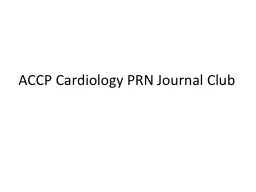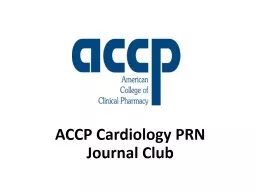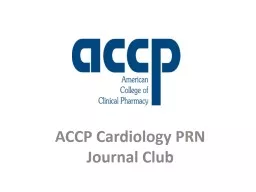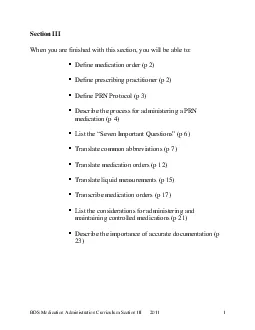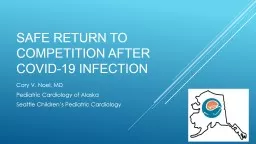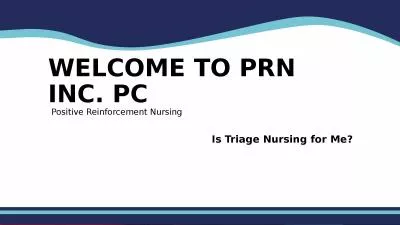PPT-ACCP Cardiology PRN Journal Club
Author : marina-yarberry | Published Date : 2019-12-22
ACCP Cardiology PRN Journal Club 27 September 2019 Presenter Bio Dr Maxwell Ditlevson is a PGY2 Cardiology Resident at the The Johns Hopkins Hospital He completed
Presentation Embed Code
Download Presentation
Download Presentation The PPT/PDF document "ACCP Cardiology PRN Journal Club" is the property of its rightful owner. Permission is granted to download and print the materials on this website for personal, non-commercial use only, and to display it on your personal computer provided you do not modify the materials and that you retain all copyright notices contained in the materials. By downloading content from our website, you accept the terms of this agreement.
ACCP Cardiology PRN Journal Club: Transcript
Download Rules Of Document
"ACCP Cardiology PRN Journal Club"The content belongs to its owner. You may download and print it for personal use, without modification, and keep all copyright notices. By downloading, you agree to these terms.
Related Documents

